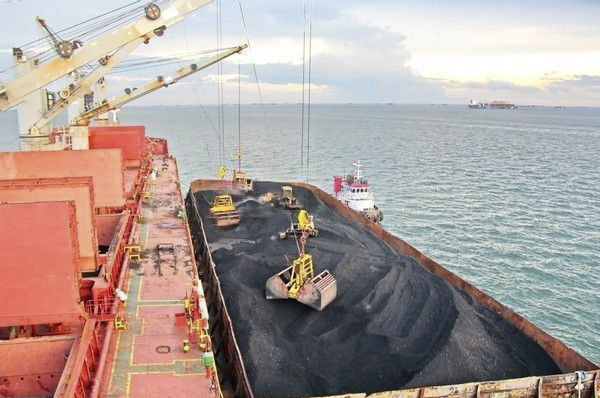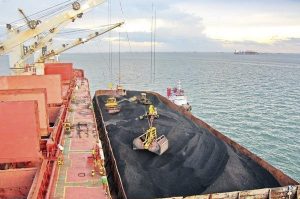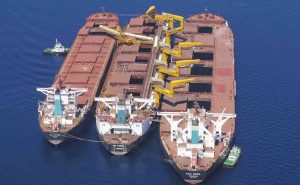The successful operation of a ship depends on the coordinated efforts of various departments, with the deck department playing a crucial role in managing cargo operations. The deck department is responsible for the safe and efficient handling of cargo, which is fundamental to the ship’s mission, whether it’s transporting goods, passengers, or specialized equipment. This article provides a detailed examination of ship cargo operations and the responsibilities of the deck department, exploring the roles of key personnel, the processes involved, and the importance of safety and efficiency in maritime operations.
Part 1: Ship Cargo Operations
Overview of Cargo Operations
Cargo operations encompass all activities related to the loading, stowage, securing, and unloading of cargo on a ship. These operations are central to the shipping industry, where the primary function is the transportation of goods across seas and oceans. Cargo can vary widely, including containers, bulk goods (like grain or coal), liquid cargo (such as oil or chemicals), and even heavy machinery or vehicles.
Types of Cargo
- Containerized Cargo: Standardized containers are used to carry a variety of goods, making loading and unloading more efficient and reducing the risk of damage.
- Bulk Cargo: Includes large quantities of homogenous goods like grains, coal, or iron ore. This cargo type is usually transported in specialized bulk carriers.
- Liquid Cargo: Transported in tankers, this category includes crude oil, petroleum products, chemicals, and liquefied gases.
- Breakbulk Cargo: Goods that are loaded individually, such as bags, crates, or machinery, often requiring specialized handling.
- Ro-Ro (Roll-on/Roll-off) Cargo: Includes vehicles, machinery, and other wheeled cargo that can be driven onto the vessel.
Key Processes in Cargo Operations
- Pre-Loading Preparations
- Cargo Planning: Detailed planning is essential to maximize space, ensure stability, and comply with safety regulations. The cargo plan outlines the stowage location, weight distribution, and securing methods for all cargo on board.
- Inspection of Cargo Spaces: Before loading, cargo holds or tanks must be inspected for cleanliness, suitability, and readiness. Any deficiencies, such as damage or residue from previous cargo, must be addressed.
- Communication with Shore Authorities: Coordination with port authorities, stevedores, and other relevant parties ensures that the loading process is synchronized and meets all legal and safety requirements.
- Loading Operations
- Cargo Handling Equipment: Depending on the type of cargo, various equipment such as cranes, forklifts, conveyor belts, and pumps are used. The deck department ensures that this equipment is properly maintained and operated.
- Stowage: Proper stowage is critical for maintaining the ship’s stability and preventing cargo shifting during the voyage. Stowage plans are followed meticulously to distribute weight evenly and avoid imbalances.
- Securing Cargo: Once stowed, cargo must be securely lashed or fastened to prevent movement. This is particularly important for breakbulk and Ro-Ro cargo, which are more prone to shifting.
- Monitoring During Voyage
- Regular Inspections: During the voyage, the deck department conducts regular inspections to ensure that the cargo remains secure and that there are no signs of shifting or damage.
- Environmental Considerations: Temperature, humidity, and ventilation must be monitored, especially for sensitive cargo such as perishable goods or chemicals that require specific conditions.
- Unloading Operations
- Coordination with Port Authorities: Just as with loading, unloading requires careful coordination with shore-based personnel. The deck department oversees the discharging process to ensure it follows the planned sequence.
- Cargo Documentation: Accurate documentation, including bills of lading and cargo manifests, is essential for legal and commercial purposes. The deck department is responsible for verifying and completing all necessary paperwork.
- Post-Unloading Procedures
- Inspection and Maintenance: After cargo discharge, holds or tanks are inspected and cleaned as needed. Any damage incurred during the voyage is reported and repaired.
- Cargo Debrief: A review of the cargo operation is conducted to identify any issues or improvements for future voyages. This debriefing often involves the entire deck department and may include feedback from shore authorities.
Part 2: Deck Department Responsibilities
Overview of the Deck Department
The deck department is responsible for the overall management of the ship, including navigation, safety, and cargo operations. It is led by the Chief Officer (or Chief Mate), who is the second-in-command after the Captain. The deck department includes a hierarchy of officers and crew members, each with specific roles and responsibilities.
Key Personnel in the Deck Department
- Captain (Master)
- Overall Command: The Captain has ultimate responsibility for the safety of the ship, crew, cargo, and passengers. While not directly involved in day-to-day cargo operations, the Captain oversees all activities and makes final decisions in case of disputes or emergencies.
- Chief Officer (Chief Mate)
- Cargo Operations: The Chief Officer is directly responsible for planning and supervising all cargo operations, from loading to discharge. They ensure that the cargo plan is executed correctly and that all safety procedures are followed.
- Safety and Compliance: The Chief Officer also oversees the safety equipment, lifeboats, and firefighting apparatus, ensuring that they are operational and compliant with regulations.
- Crew Management: The Chief Officer manages the deck crew, assigning duties, overseeing training, and ensuring that all tasks are completed efficiently.
- Second Officer (Second Mate)
- Navigation: The Second Officer is primarily responsible for navigation, including route planning, maintaining navigational equipment, and keeping the ship’s log. During cargo operations, they assist the Chief Officer as needed.
- Safety Drills: They conduct regular safety drills, including fire, abandon ship, and man-overboard drills, ensuring the crew is prepared for emergencies.
- Third Officer (Third Mate)
- Watchkeeping: The Third Officer is responsible for maintaining a watch during navigation, ensuring the ship’s course is maintained and monitoring for hazards. During cargo operations, they assist with monitoring cargo condition and securing.
- Safety Equipment: The Third Officer often manages the ship’s safety gear, ensuring it is in good condition and ready for use.
- Bosun (Boatswain)
- Deck Crew Supervision: The Bosun is the senior-most crew member on deck and supervises the daily work of the deckhands. They ensure that the deck is well-maintained, equipment is operational, and all tasks are completed.
- Maintenance: Responsible for routine maintenance tasks such as painting, cleaning, and minor repairs on deck and cargo equipment.
- Able Seaman (AB)
- General Deck Work: Able Seamen carry out a variety of tasks, including handling mooring lines, assisting with cargo operations, and performing maintenance. They are also responsible for keeping watch and steering the ship under the officer’s supervision.
- Cargo Handling: ABs assist in securing and monitoring cargo, operating cranes or other handling equipment, and ensuring the safety of the cargo during the voyage.
- Ordinary Seaman (OS)
- Assistance in Operations: Ordinary Seamen are entry-level crew members who assist ABs and other senior crew in their duties. They help with cleaning, maintenance, and cargo handling, gaining experience for future advancement.
Part 3: Safety and Efficiency in Cargo Operations
Importance of Safety in Cargo Operations
- Preventing Accidents: Mishandling of cargo can lead to accidents, including spills, fires, or even capsizing due to improper stowage. Strict adherence to safety protocols minimizes these risks.
- Protecting the Environment: Many cargos, especially liquid and chemical cargoes, pose environmental hazards. Proper handling and emergency preparedness are essential to prevent environmental contamination.
- Ensuring Crew Health: Cargo operations often involve hazardous materials or dangerous equipment. Ensuring that crew members follow safety procedures and wear appropriate protective gear is crucial for their health and safety.
Enhancing Efficiency in Cargo Operations
- Technology and Automation: Modern ships are increasingly equipped with automated systems for cargo handling, such as automated cranes and stowage planning software. These technologies improve efficiency and reduce the likelihood of human error.
- Training and Competence: Regular training and drills ensure that the deck crew is proficient in their tasks and prepared for any emergencies that may arise during cargo operations.
- Communication and Coordination: Effective communication between the ship’s crew, port authorities, and shore-based personnel is essential for smooth and efficient cargo operations. Clear communication prevents misunderstandings and ensures that all parties are aligned with the cargo plan.
Ship cargo operations are a complex and vital aspect of maritime transportation, requiring careful planning, coordination, and execution. The deck department plays a central role in ensuring that these operations are conducted safely and efficiently, from the initial planning stages through to the final unloading of cargo. Each member of the deck department, from the Captain to the Ordinary Seaman, has specific responsibilities that contribute to the overall success of the operation.
Safety is paramount in all aspects of cargo handling, not only to protect the crew and the ship but also to prevent environmental damage and ensure the integrity of the cargo itself. By adhering to established procedures, embracing technological advancements, and fostering a culture of continuous training and communication, the maritime industry can continue to meet the challenges of modern cargo operations while maintaining the highest standards of safety and efficiency.



